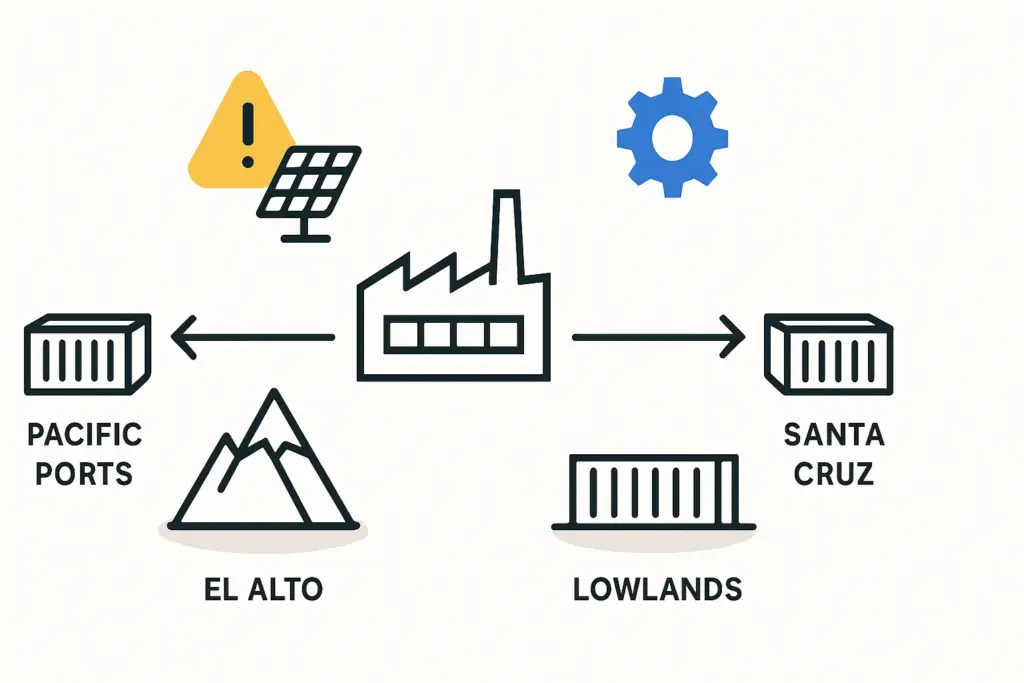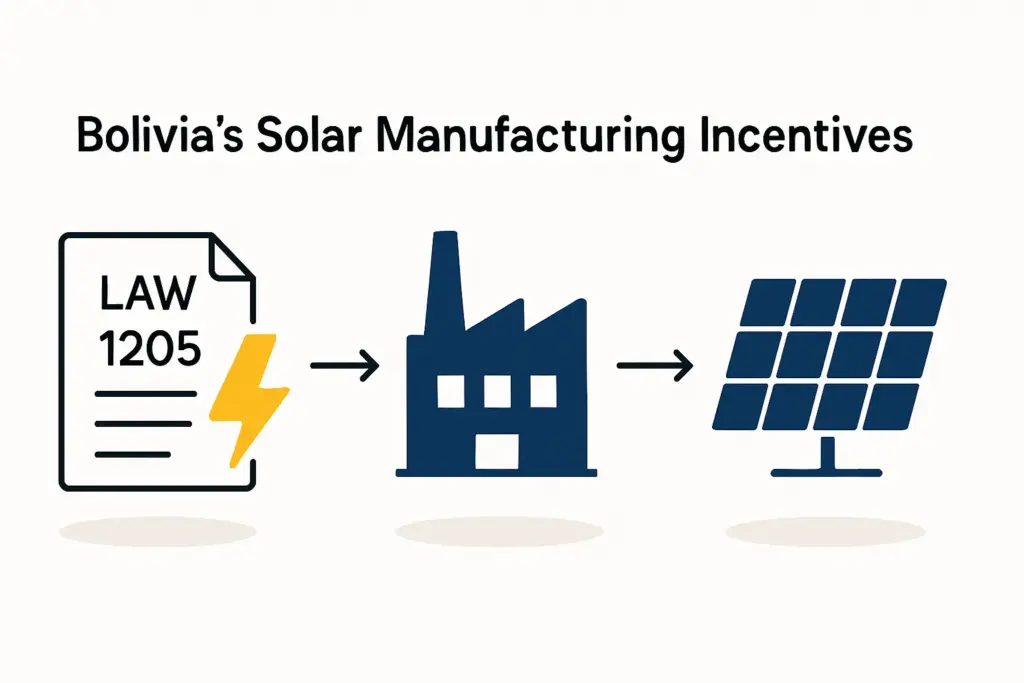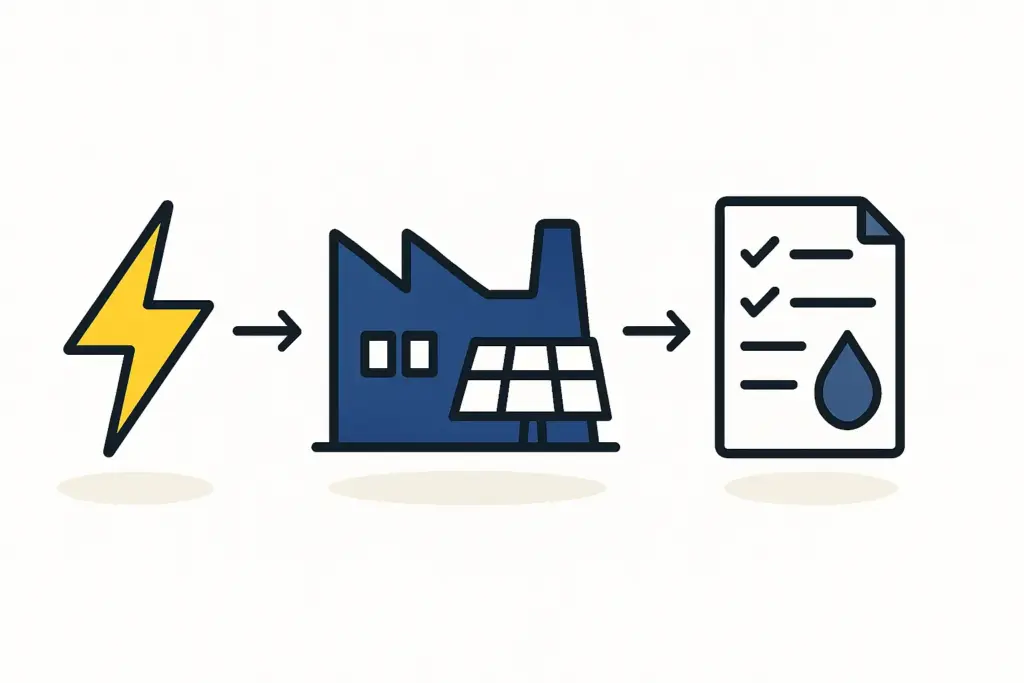Discover comprehensive insights into the statistics, market trends, and growth potential surrounding the solar panel manufacturing industry in Bolivia
- https://www.sunpope.com/bolivia/, s., “Sunshine hours in Bolivia”, Retrieved on 24 August 2024.
- https://solargis.com/resources/free-maps-and-gis-data?locality=bolivia, s., “Solar Radiation Data”, Retrieved on 25 August 2024.
- https://www.cndc.bo/reporte/index_dos.php, c., “Price of electricity”, Retrieved on 4 September 2024.
- https://www.global-climatescope.org/markets/bo/, g., “Electricity sector in Bolivia”, Retrieved on 25 August 2024.
- https://prosperitydata360.worldbank.org/en/indicator/WB+DB+56, p., “SAIFI for Bolivia”, Retrieved on 27 August 2024.
- https://databank.worldbank.org/id/dd1d6036?Report_Name=SAIDI-Index-WB, d., “SAIDI for Bolivia”, Retrieved on 27 August 2024.
- https://ourworldindata.org/energy/country/bolivia, o., “Electricty production in Bolivia”, Retrieved on 26 August 2024.
- https://www.irena.org/-/media/Files/IRENA/Agency/Publication/2024/Jul/IRENA_Renewable_Energy_Statistics_2024.pdf, i., “Solar prodiction capacity”, Retrieved on 1 September 2024.
- https://www.sciencedirect.com/science/article/pii/S0973082622000953, s., “Levelized Cost Of Electricity”, Retrieved on 25 August 2024.
- https://www.iea.org/policies/5825-bolivia-electric-plan-2020-2025-plan-del-sector-electrico-del-estado-plurinacional-de-bolivia-2025, i., “Projected Renwable Energy in Bolivia”, Retrieved on 25 August 2024.
- https://www.enersol-sa.com/, e., “Official website”, Retrieved on 31 Augsut 2024.
- https://www.researchgate.net/publication/337197636_A_comprehensive_solution_approach_to_the_sustainability_problem_of_photovoltaic_systems_The_Bolivian_case, r., “Residential Solar Power”, Retrieved on 25 August 2024.
- https://worldsalaries.com/average-solar-photovoltaic-installer-salary-in-bolivia/, w., “Photovoltaic Installer Salary in Bolivia”, Retrieved on 26 August 2024.
- https://worldsalaries.com/average-solar-engineer-salary-in-santa-cruz/bolivia/, w., “Photovoltaic Engineer Salary in Bolivia”, Retrieved on 26 August 2024.
- https://worldsalaries.com/average-solar-engineer-salary-in-cochabamba/bolivia/, w., “Photovoltaic Engineer Salary in Bolivia”, Retrieved on 26 August 2024.
- https://www.worldometers.info/world-population/bolivia-population/, w., “Population of Bolivia”, Retrieved on 25 August 2024.
- https://www.remax.bo/PublicListingList.aspx , r., “Average rent in Bolivia”, Retrieved on 31 August 2024.
- https://countryeconomy.com/energy-and-environment/electricity-consumption/bolivia, c., “Electricity metrics in bolivia”, Retrieved on 27 August 2024.
- https://www.enerdata.net/estore/country-profiles/bolivia.html, e., “Leading Players in Bolivia”, Retrieved on 26 August 2024.
- https://www.icex.es/content/dam/es/icex/oficinas/062/documentos/2022/12/estudios-de-mercado/EM_%20El%20mercado%20de%20las%20ENERGIAS%20RENOVABLES%20en%20Bolivia%202022.pdf, ic, Official Document, Retrieved on 2 September 2024.
- https://www.power-technology.com/data-insights/power-plant-profile-guaracachi-combined-cycle-power-plant-bolivia/, p., “Guarachi Power Plant”, Retrieved on 30 August 2024.
- https://www.gem.wiki/Del_Sur_power_station, g., “Thermal Power Plant”, Retrieved on 3 September 2024.
- https://www.gem.wiki/Warnes_power_station, g., “Thermal Power Plant”, Retrieved on 3 September 2024.
- https://www.gem.wiki/Entre_R%C3%ADos_power_station, g., “Thermal Power Plant”, Retrieved on 3 September 2024.
- https://www.thewindpower.net/windfarm_en_33051_el-dorado.php, t., “Wind Power Plant”, Retrieved on 3 September 2024.
- https://www.thewindpower.net/windfarm_en_33049_san-julian.php, g., “Wind Power Plant”, Retrieved on 3 September 2024.
- https://www.thewindpower.net/windfarm_en_22869_qollpana-ii.php, t., “Wind power plant”, Retrieved on 3 September 2024.
- https://www.thewindpower.net/windfarm_en_21057_qollpana.php, t., “Wind power plant”, Retrieved on 3 September 2024.
- https://www.thewindpower.net/windfarm_en_33050_warnes.php, t., “Wind Power Plant”, Retrieved on 3 September 2024.
- https://www.power-technology.com/marketdata/power-plant-profile-san-jose-cora-bolivia/ , p., “Hydro Power”, Retrieved on 3 September 2024.
- https://www.power-technology.com/marketdata/power-plant-profile-misicuni-bolivia, p., “Hydro Power Plant”, Retrieved on 3 September 2024.
- https://www.power-technology.com/marketdata/power-plant-profile-santa-isabel-corani-bolivia, p., “Hydro Power Plant”, Retrieved on 3 September 2024.
- https://www.power-technology.com/marketdata/power-plant-profile-la-paz-run-of-river-hep-bolivia, p., “Hydro Power Plant”, Retrieved on 3 September 2024.
- https://www.power-technology.com/marketdata/power-plant-profile-guabira-biomass-power-plant-bolivia, p., “Bio fuel power plants”, Retrieved on 4 September 2024.
- https://www.power-technology.com/marketdata/power-plant-profile-unagro-biomass-power-plant-bolivia, p., “Bio fuel power plant”, Retrieved on 4 September 2024.
- https://www.tuv.com/world/en/photovoltaic-modules.html, t., “PV module certifications”,Retrieved on 3 September 2024.
- https://www.iea.org/policies/5828-vat-and-import-duties-exemptions-for-renewable-technologies-beni-and-pandofor, i., “Tax and duty free imports”, Retrieved on 3 September 2024.
- https://www.pv-magazine.com/2021/03/31/bolivia-introduces-net-metering-for-rooftop-pv/, p., “Net metering”, Retrieved on 3 September 2024.
- https://www.grupotsk.com/en/project/oruro-100-mw-solar-park/, g., “Oruro Solar Park”, Retrieved on 24 August 2024.
- https://www.power-technology.com/marketdata/uyuni-solar-pv-park-bolivia/, p., “Uyuni Solar Park”, Retrieved on 27 August 2024.
- https://www.ende.bo/noticia/noticia/586, e., “Cobija Solar Plant”, Retrieved on 27 August 2024.
- https://www.gem.wiki/Yunchar%C3%A1_solar_farm s., “Yunchara Solar park”, Retrieved on 27 August 2024.
- https://www.pv-magazine-latam.com/2024/05/23/lanzan-en-bolivia-licitacion-para-una-planta-solar-de-20-mw/, p., “Viru Viru Solar Park”, Retrieved on 27 August 2024.
- https://www.power-technology.com/marketdata/power-plant-profile-contorno-bajo-solar-pv-park-bolivia/, p., “Contorno Bajo Solar Park”, Retrieved on 27 August 2024.
- https://www.pv-magazine-latam.com/2023/01/19/bolivia-construira-una-planta-de-40-mw-con-baterias-a-3-905-metros-sobre-el-nivel-del-mar-2/, p.
- https://www.ende.bo/index.php, e., “Official Website”, Retrieved on 27 August 2024.
- https://www.elfec.bo/, e., “Official Website”, Retrieved on 3 September 2024.
- https://stsolarbolivia.com/, s., “Official website”, Retrieved on 3 September 2024.
- http://www.energetica.org.bo/energetica/index.asp, e., “Official Website”, Retrieved on 3 September 2024.
- https://primroot.com/solar-panel-manufacturers-in-bolivia/, p., “Solar Companies”, Retrieved on 3 September 2024.





























